

Chinese photographer looks behind the curtain in North Korea
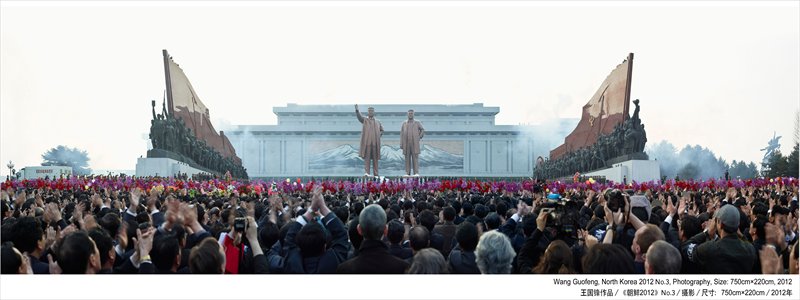
North Korea 2012 No.3by Wang Guofeng Photo: Courtesy of Wang Guofeng
For more photos: Photographing North Korea
For those who have never been to North Korea the country remains a land coated in mystery and as such they have to rely on fragmented information to piece together a picture. For Wang Guofeng, however, North Korea has become a land of "spectacular sights."
Wang has traveled to the country every year since 2011 to take photos. Now as the 70th anniversary of the end of World War II approaches, Wang is preparing to head to North Korea for the fifth time to shoot the celebration ceremony.
"It is spectacular to me, whether seeing them get together in large gatherings or their individual lifestyles. Taking pictures of these spectacular events is both a familiar and strange experience," Wang told the Global Times. "North Korea is a window on China's past through which I can experience a period of history I never had the chance to live through."
Struggle and compromise
Search for Wang Guofeng and North Korea together and you can immediately get dozens of pictures taken in the country. From buildings to performances, from large assemblies to individuals, these pictures give people a peek into life in North Korea, while also putting the man behind the camera under the spotlight time and time again.
Like you may have expected, it is not an easy job. The first artist officially permitted to take pictures by North Korean authorities, it took Wang three years and all kinds of difficulties to get official sanction. When he finally entered the country in 2011, he realized that the challenges he had overcome so far had been just an appetizer.
As a photographer, the biggest headache for him are the country's ubiquitous restrictions and the lack of flexibility. After several trips to North Korea he has learned that taking pictures of photos and sculptures of national leaders and soldiers (except during public occasions) are prohibited. However what really surprised him were the things he never expected to be fenced off.
According to Wang, he hands in a plan of what he's interested in shooting three or four months before each visit. However, when he arrives he often finds that many of these items don't make the list of approved items, instead replaced by an official list of scenes that don't interest him much at all.
Wang first started by shooting buildings with traces of socialist iconography, most of which are usually old. "They provided me a list of new and modern buildings that demonstrate the country's development," Wang said. "But these were not really consistent with what I had planned."
Adding to his difficulties is the fact it's not possible to shoot an unlisted object on the spur of the moment. While in Pyongyang in 2011, Wang suddenly came across the Pyongyang train station, which he found fit perfectly with the theme he was going for that year. However, since it wasn't on his list he had to struggle for several days to get permission to shoot it, an attempt that ultimately failed. The authorities told him to apply for the building next year. "This restriction is fatal for an artist that lives off of inspiration," Wang said sighing.
Another time, he applied to photograph a farmer family, but was rejected. Working out a compromise they later arranged a photo shoot with on a State-run farm in the outskirts of Pyongyang (that was once visited by Zhou Enlai and Kim Il-sung in the 1950s) where the family were actually employees of the State instead of farmers living off the land in the traditional sense.
Besides strict restrictions and inspections, another issue that has frustrated Wang innumerous times as a photographer from outside North Korea, is how he even has to fight to get good spots from which to take pictures.
In August 2013, when shooting a performance of the folk song Arirang by 100,000 people in Pyongyang, Wang was provided a spot that prevented him from using the symmetric style he normally shoots with. Although he complained the event organizers still refused to give him a better place upstairs as that area was reserved for local media. Frustrated but not ready to give up he continued to plead with organizers and they finally gave him the ideal place he wanted the next evening.
Such negotiations have become so much a part of his experiences in North Korea that he feels, "struggling and negotiation is my second job there besides taking photographs."
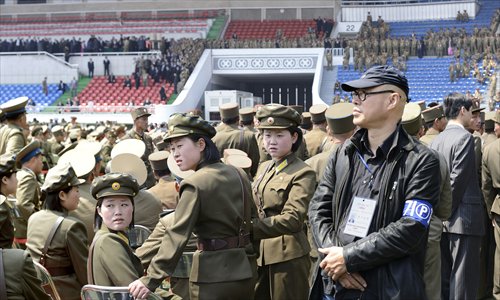
Wang Guofeng Photo: Courtesy of Wang GuofengRevealing reality
Unlike many who go to North Korea and take pictures out of curiosity, Wang stressed several times during his interview with the Global Times that were the complete opposite. For him it is incredibly important that he be seen as a recorder of truth that tries to maintain an objective stance. Entering North Korea in 2011, at first he just wanted to take pictures of the country's socialist architecture as part of his overall plans to examine countries that were once socialist, but gradually he came to realize that socialism was still alive and well in the country.
"North Korean people still live in a socialist society. And people are the main body of a society. So I knew I had to shoot the people," Wang explained.
He then began turning his lens on the countries people, making small breakthroughs here and there and going from taking pictures of huge gatherings to families and individuals including intellectuals, students, workers and farmers.
Part and parcel with photographing people came staged photo shoots arranged by the government. No matter if it was workers, students or families of scientists, every shoot was arranged by the officials who followed Wang and other photographers around, meaning Wang had no freedom to choose who, when and where he could shoot. For example, all the families that appear in Wang's photos are so-called "model" families once visited by national leaders.
Wang told the Global Times that he sees these staged pictures as part of the reality of North Korea. As such there is nothing he can do except to "try and break up what they've staged and set up my own version of it," Wang said.
When taking pictures of students at Pyongyang First Middle School in 2014, for example, Wang did his best to capture the picture that he wanted. When the seven-member photography crew walked into the classroom, the students who were carrying out a physics experiment treated the photographers as if they were completely invisible. Thinking that the setting looked too unrealistic, Wang asked them all to look right into the camera instead.
"I told them I wanted to take a picture that was different from what a journalist would take and that I wanted to demonstrate the spirit of teenagers in North Korea through their eyes and facial expressions," Wang said, going on to explain that he just wanted to use his own language to represent the scene that they provided.
"That's enough for me I think. I'm not a journalist after all. Speaking of staged photography, what I shoot is actually a show, which adds a layer of artistic significance to my works. That's the most interesting part about the series," Wang said.
Embarrassing situation
An artist whose art includes painting and video and installation art, Wang explained that he chose photography as the medium for his current socialism series, which has taken him to countries Russia, Romania, Poland and Germany.
Having finally finished shooting all the buildings and people he was interested in or could reach in North Korea, Wang is ready to move on to other countries, but his has led to an embarrassing situation beyond his control.
"I never meant to become a specialist in North Korea photography. Since the country is just one part of my plan, I need to go on to other countries to finish the series. But after all these years, photographing the country doesn't just involve me any more," Wang said, explaining that last year an official in North Korea's culture ministry told him that as the first and only artist given special permission to take photographs in North Korea his art isn't just about him, but is also a matter of relevance to the North Korean government.
He revealed to the Global Times that North Korea authorities are considering holding an exhibition of his works and also publishing a picture book to entice him to continue his work in the country.
However, Wang doubts that he will be able to go any deeper in this direction. "I think I can only reach so far into this country. I'm afraid it won't be possible for me to go deeper into their lives or make any more breakthroughs."
"Holding an exhibition is something we agreed on before I started shooting there," Wang said. The exhibition was originally set for August 15 to go hand in hand with the 70th anniversary of World War II, but since he intends to go to North Korea for more photos around that same time, he's negotiating with authorities to postpone the exhibition to next year so that his latest photos could also be included.
"Besides, holding exhibitions in North Korea comes out of my own pocket. It's a big sum. I'm still raising money for it," Wang explained.
Wang has already started thinking of his next step.
"I haven't finished my series yet. I'm traveling around the world for the project. I'm currently taking with the Cuban government. I may go there later this year or early next year," Wang said.
Day|Week

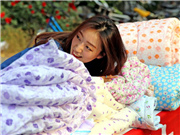 Tsinghua junior makes over 10,000 yuan a day by selling alumnae's used quilts
Tsinghua junior makes over 10,000 yuan a day by selling alumnae's used quilts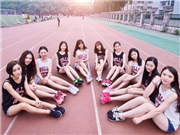 Graduation photos of students from Zhongnan University
Graduation photos of students from Zhongnan University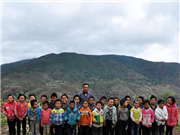 A school with only one teacher in deep mountains
A school with only one teacher in deep mountains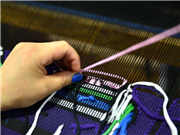 Glimpse of cultural heritage "Xilankapu"
Glimpse of cultural heritage "Xilankapu"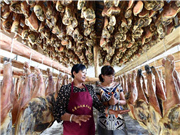 Homemade cured hams in SW China
Homemade cured hams in SW China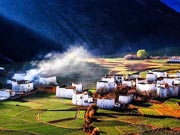 Breathtaking buildings of W. Sichuan Plateau
Breathtaking buildings of W. Sichuan Plateau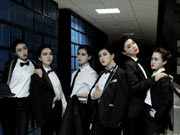 Graduation photos of "legal beauties"
Graduation photos of "legal beauties"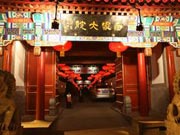 Top 10 most expensive restaurants in Beijing in 2015
Top 10 most expensive restaurants in Beijing in 2015